Amami Oshima 鹿児島県 奄美大島
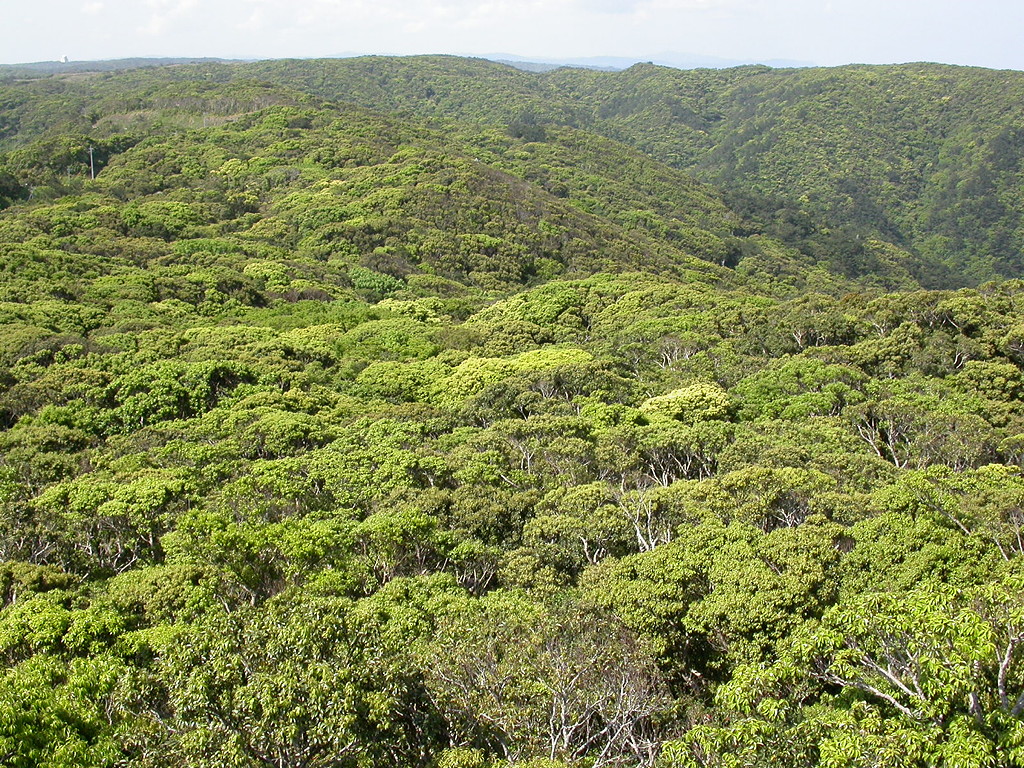
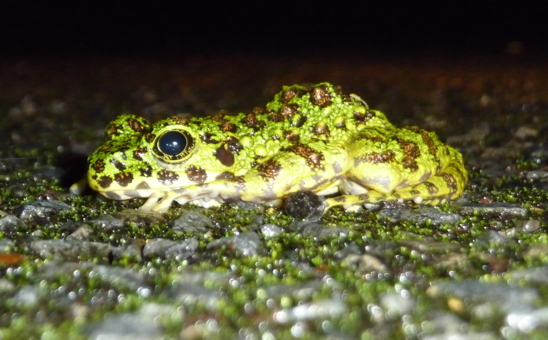 Amami Oshima is home to a wide range of the Ryukyu Island avian endemics, including some that are easier to see here or that are only possible here. In particular, look for Amami Woodcock, Ryukyu Green Pigeon, Lidth's Jay, Owston's Woodpecker, Amami Thrush, Ryukyu Flycatcher and Ryukyu Robin. The island is also home to a number of endemic amphibians and reptiles, so there is much to look for, especially at night. The endemic Amami Ishikawa's Frog for example is, perhaps, the most beautiful amphibian in the whole of Japan.
Amami Oshima is home to a wide range of the Ryukyu Island avian endemics, including some that are easier to see here or that are only possible here. In particular, look for Amami Woodcock, Ryukyu Green Pigeon, Lidth's Jay, Owston's Woodpecker, Amami Thrush, Ryukyu Flycatcher and Ryukyu Robin. The island is also home to a number of endemic amphibians and reptiles, so there is much to look for, especially at night. The endemic Amami Ishikawa's Frog for example is, perhaps, the most beautiful amphibian in the whole of Japan.
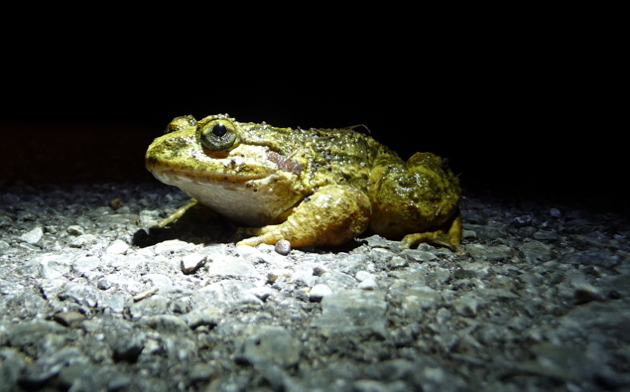 If you have made a reservation (and one is recommended) on arrival at Amami Oshima Airport someone from the vehicle rental company will be waiting for you and holding a sign with your name on. They will then take you to the nearby office to sign the rental agreement and pick up the vehicle. All rental vehicles should be returned with a full tank of fuel. Four-wheel drive vehicles are not generally available from the hire car companies dealing with tourists, but a limited number might be available if you ask when booking your transport.
If you have made a reservation (and one is recommended) on arrival at Amami Oshima Airport someone from the vehicle rental company will be waiting for you and holding a sign with your name on. They will then take you to the nearby office to sign the rental agreement and pick up the vehicle. All rental vehicles should be returned with a full tank of fuel. Four-wheel drive vehicles are not generally available from the hire car companies dealing with tourists, but a limited number might be available if you ask when booking your transport.
Target species
Owston's Woodpecker: Along the road either side of Amami Natural Forest, and of course inside, is as good a place as any. They can also be seen at several other places around the island, including along the Kinsakubaru forest trail and at Yuwan-dake.
Lidth's Jay: Amami Natural Forest is a good location for them, but they are often silent (especially during the winter months) and can take time to find. Or, at the other extreme, they are noisy and appear to be all over the place!
Amami Thrush: A hard bird to find at any time of the year, and best located during late winter and in early spring when males can be heard singing at dawn. They may sometimes be seen feeding along the Kinsakubaru forest track, around the car park at Yuwan-dake, and at Amami Natural Forest. Walk very slowly, keeping your eyes on the sides of the track/ditches –- they often feed and move very unobtrusively
Ryukyu Robin: This species occurs widely around the island, and can be often heard – and sometimes seen! – at Amami Natural Forest, Kinsakubaru forest trail and Yuwan-dake
Accommodation:
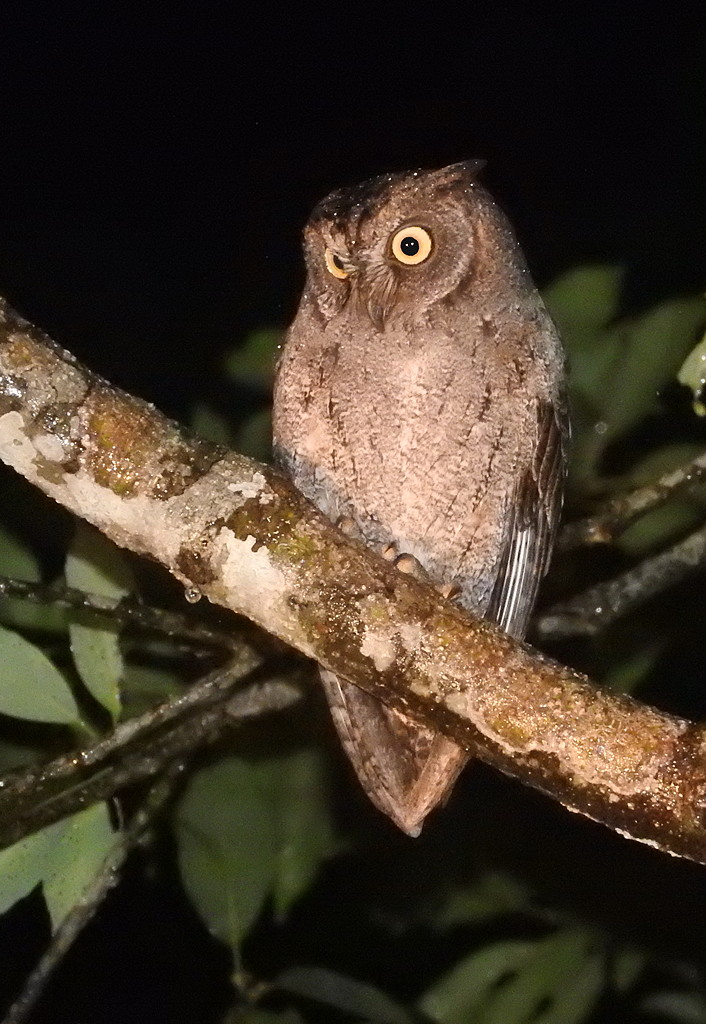 Being a “tropical resort island,” there is no shortage of places to stay, but it gets busy during the peak vacation season, which lasts from mid-July through mid-September. Also, there is always a chance of a typhoon during the late summer and autumn, in which case, if the island is in its path, all transportation will stop.
Being a “tropical resort island,” there is no shortage of places to stay, but it gets busy during the peak vacation season, which lasts from mid-July through mid-September. Also, there is always a chance of a typhoon during the late summer and autumn, in which case, if the island is in its path, all transportation will stop.
For general hotel information try:
http://www.jnto.go.jp/ja-search/eng/list.php?resort_code=449
Caretta Hotel Tel: 0997-62-3821 http://www.hotel-caretta.com/ Map: 28.428184, 129.618149
Located in Tatsugo village, off the main road between the airport and Amami City. The staff here are friendly and helpful, and often Lidth's Jay can be found in or around the hotel (and once a pair actually bred in a hole in the hotel building!).
Amami Yagijima Hotel Tel: 0997-54-5111 http://yagijima.com/ Map: 28.399271, 129.506696
A welcoming hotel right next to the harbour in Amami City (in a former life it was known as the Amami Seaside Hotel). The hotel provides a Japanese and Western-style buffet breakfast (07:00–09:00), and features a rooftop hot-spring bath with views across the harbour. The hotel is situated conveniently for night safaris in the southern part of the island, and also for Kinsakubaru trail. The drive from the hotel to Amami Natural Forest takes about 30 minutes.
West Court Hotel Tel: 0997-52-8080 http://www.westcourt.co.jp/
This reasonably priced business hotel is located in central Amami City. Accommodation can be reserved on a room-only basis, or with breakfast. There are several convenience stores in the area where breakfast items can be purchased, and also restaurants where dinner can be eaten.
Basyayama Resort Hotel. Tel: 0997-63-1178 http://www.amami-bsy.com/top.html Map: 28.403638, 129.647552
This beach-side hotel – popular with divers and sunbathers during the summer season – is set in a pleasant ocean-side location not far from the airport on the way to Amami City. It is approximately one hour by car from Amami City (Naze), the island's main town, and about a 30-minute drive to Amami Natural Forest. Terns and turtles can sometimes be seen from the terrace. Lidth's Jay is in the area, as is Pacific Swallow, Ruddy Kingfisher and Ryukyu Green Pigeon.
In Amami City there are several reasonably priced business hotels such as Amami Port Tower Hotel (with hot spring) and Hotel West Court. And in Chinaze Village there is the Amami Youth Hostel Tel: 0997-54-8969 http://www.jyh.or.jp/info.php?jyhno=8718 Map: 28.379160, 129.449418
Local Guides:
We recommend that you hire a local guide with a 4WD vehicle and a spotlight for a night safari (2–3 hours). This costs about ¥9,000 per person (pickup at your hotel), sometimes with cheaper rates for groups, but only two vehicles can be used per evening (maximum of six people — or eight at a squeeze). Takashi-san Tel: 090-7397-2143 or Tsuneda-san Tel: 090-9599-3079 (reservation, in Japanese, required).
Birding Sites:
Amami Natural Forest (Amami Shizen Kansatsu no Mori) 奄美自然観察の森
Map: 28.452516, 129.592882
Signposted on the main road from the airport to Amami City at Tatsugo Town. Turn off Route 58 at Tatsugo Town Office onto Route 81. The forest is signposted at a junction about 3 km from the main road. Turn left here and drive up a long steep and winding hill, then right at the four-way junction at the top, until you reach the parking area. Within the forest are a number of trails, and also a couple of observation platforms. There is a children's outdoor play area, which is falling into disrepair, and also toilet facilities.
The forest is a good spot for Lidth's Jay, Owston's Woodpecker, Ryukyu Green Pigeon, Ruddy Kingfisher and Ryukyu Robin. If you are lucky you may also find Amami Thrush and Ryukyu Flycatcher. During the spring, keep your eyes on the sky as Chinese Sparrowhawk migrates over the island.
Ose Beach (Ose Kaigan) 大瀬海岸
Map: 28.451623, 129.717356
Ose Beach provides excellent coastal shorebird habitat and is located only about 2 km east of the airport. Follow the main road from the airport to the east, through the small village. When you reach a three-way junction (gas station on right side) keep to the right and after about 500 meters there is a turning to the right (a small signpost says, in English, "Birdwatching area"). About 250 meters along, on the right, there is a parking area and a large sign with bird photographs on. Ose Beach is just behind the parking area.
This area of beach, and as far as Tomori Beach, about 1 km to the north, are good areas for migrating/wintering shorebirds, as well as species such as: Western Osprey, Temminck's Cormorant, Eastern Blue Rock Thrush. Swinhoe's Egret has also been seen here a number of times.
Yuwan-dake 湯湾岳
Map: 28.296265, 129.321051
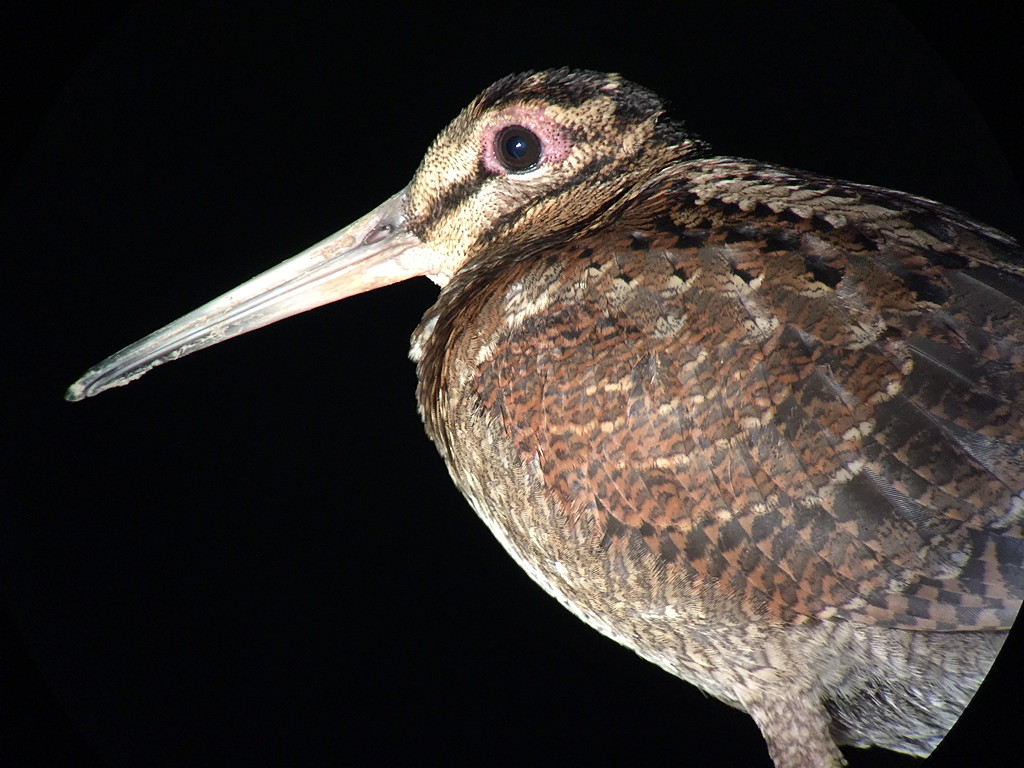 In the south of the island, a short drive through dense evergreen forest and overhanging tree ferns northeast of Uken Village, is 694-metre-high Yuwan-dake (peak). At night look for Amami Woodcock by the roadside on the drive up, and around dawn or later in the day, look for Amami Thrush by the car park, and also Owston's Woodpecker and Ryukyu Green Pigeon.
In the south of the island, a short drive through dense evergreen forest and overhanging tree ferns northeast of Uken Village, is 694-metre-high Yuwan-dake (peak). At night look for Amami Woodcock by the roadside on the drive up, and around dawn or later in the day, look for Amami Thrush by the car park, and also Owston's Woodpecker and Ryukyu Green Pigeon.
There are toilet facilities at the car park.
The summit of Yuwan-dake is about an hour uphill along a trail from the car park. There is a good chance of seeing the local pit viper, Habu, here.
Kinsakubaru Forest Trail 金作原林道
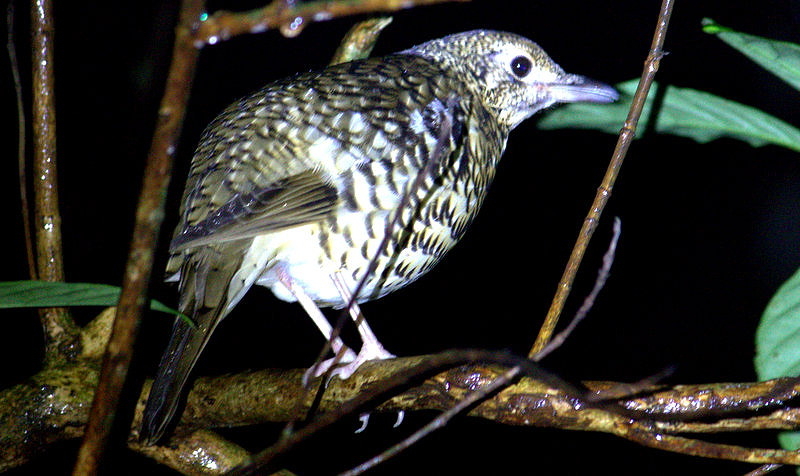 This track runs through the forest in the central part of Amami Oshima, and in late winter is good at dawn for Amami Thrush. Other species here include: Lidth's Jay, Ryukyu Green Pigeon, Japanese Woodpigeon, Owston's Woodpecker, and Ryukyu Flycatcher. Asian Stubtail can be found in winter, and many Pale Thrush, as well as Japanese Tit and Varied Tit. Ryukyu Scops Owl can be found at night, and, if you are lucky, so too can Spiny-tailed Rat and the endemic Amami Rabbit and Spiny-tailed Rat.
This track runs through the forest in the central part of Amami Oshima, and in late winter is good at dawn for Amami Thrush. Other species here include: Lidth's Jay, Ryukyu Green Pigeon, Japanese Woodpigeon, Owston's Woodpecker, and Ryukyu Flycatcher. Asian Stubtail can be found in winter, and many Pale Thrush, as well as Japanese Tit and Varied Tit. Ryukyu Scops Owl can be found at night, and, if you are lucky, so too can Spiny-tailed Rat and the endemic Amami Rabbit and Spiny-tailed Rat.
Junction near Akasaki Park (the beginning of the road which eventually joins with Kinsakubaru forest trail): Map: 28.395908, 129.489444
Kinsakubaru track junction (west). This road drops down to Route 79 at Chinaze village: Map: 28.349272, 129.449862.
Akina 秋名
Map: 28.443251, 129.559854
This is an area of rice paddies located just southeast of Akina Village. It is about an hour's drive northeast of Amami City, along Route 81 and past Amami Country Club, to the area. In the winter and spring a few waders drop in to feed in the flooded fields, and during spring migration it could be an interesting place to check. Two or three species of egrets are usually present, and during winter, Grey-faced Buzzard is never very far away.
Amami Forestpolis Park 奄美フォレストポリス
http://www.amamiforest.com/index.html Map: 28.317928, 129.335827 Tel: 0997-58-3166
Despite various visiting birders wrongly associating this place with "forest police," the name has nothing to do with law and order or security, but is cognate with metropolis! It is a recreation centre with camping facilities/rental cabins and trails through the forest. At night, while driving to this place from Amami City, look for Amami Woodcock feeding on the grassy verges, and around the car parks at Amami Forestpolis, Elegant Scops Owl can often be heard and sometimes seen. During rainy weather look for various snakes and amphibians on the roads. Access is by turning left at the signpost on Route 79 (at 28.364643, 129.343226), about an hour or so west of Amami City. It takes about 30 minutes to drive slowly from the junction to the car park at Amami Forestpolis.
Amami Nature Center
http://www.amami.co.jp/menu2.htm (in Japanese)
Warning: Venomous pit vipers, known locally as Habu and Hime-habu (Princess Habu), and endemic to the Ryukyu Islands, can be found in the forests and wilder areas of the island.
Both species are mostly nocturnal, when they hunt for amphibians, other reptiles and small mammals.
Be careful, especially when out looking for Amami Woodcock or owls at night. In some places, such as along the Kinsakubaru forest track and in Amami Natural Forest, warning signs are posted. In Japanese/katakana, the name of the snake is written ハブ
© 2021 Mark Brazil & Chris Cook
Last updated: 20210605
